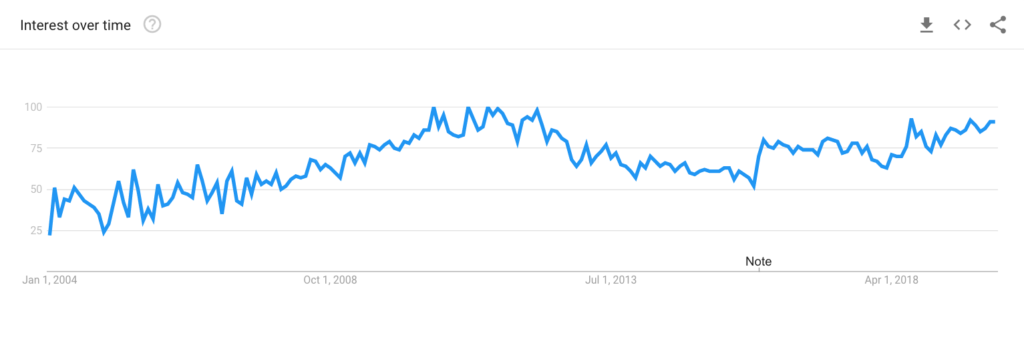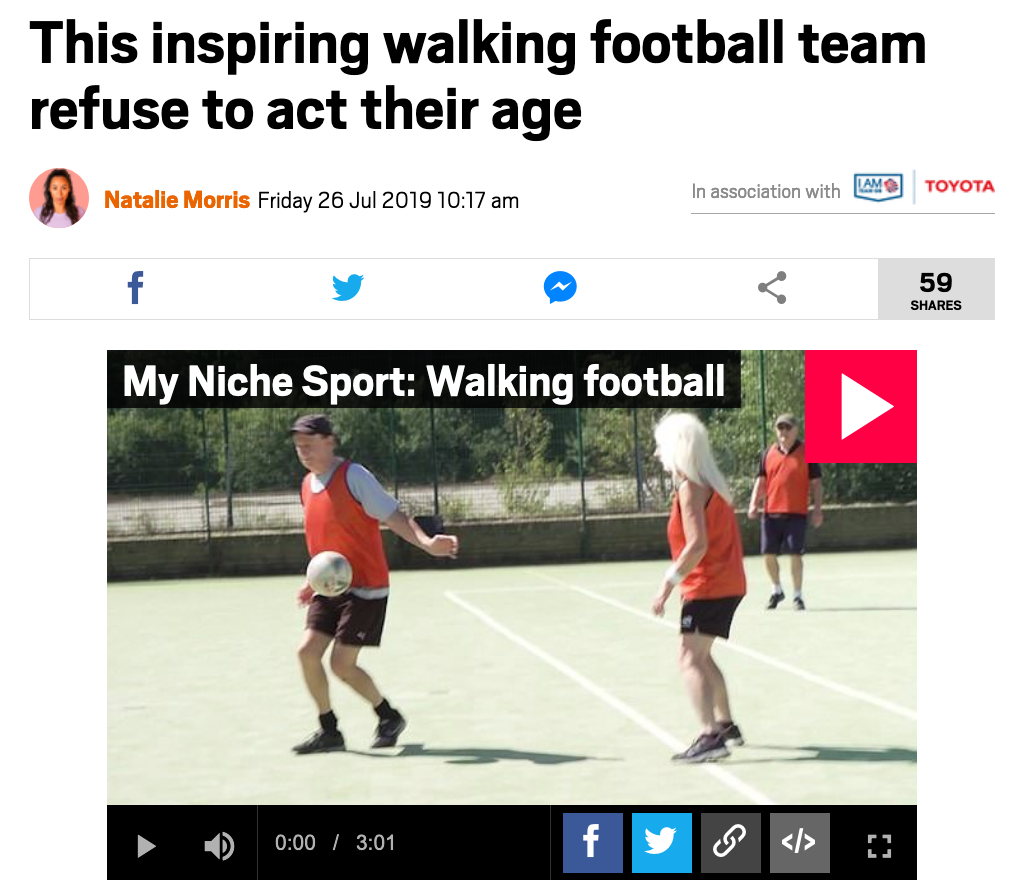Determining the right link building tactic for your brand
As interest in link building approaches a new all-time high (reference: Google Trends below), it’s more important than ever to understand what your brand needs when it comes to links and – specifically – whether to aim for quantity or quality.

Time and time again, we have seen the link quality approach yield results, even when it reveals that only one or two links to specific pages are what’s needed to see genuine ROI. Yet, the industry chatter reflects something else.
At times, agencies appear to be benefiting from unnecessarily huge campaigns, often building links to pages that don’t require them or wasting time and money by chasing high numbers of links when a few relevant ones would have achieved a more tangible return.
Any worthwhile link building strategy should tell you what each activity will generate in ROI terms. We use a method that we call Opportunity Sizing. This helps us generate a list of pages that need links, alongside their estimated associated numbers and quality needs, to determine the type of link building campaign we should execute.
For example, if a ‘link needy’ page requires a high number of links or a substantial boost to its Trust Flow, then it will likely fall into our growth campaign category e.g. larger scale Digital PR campaigns that tend to have supporting visual assets or development time. Alternatively, if a page “only” needs one or two links, then it’s likely to need a small-scale campaign or on-going tactical link building activity which we call flexible link building.

Equally as important as knowing how many links we need to aim for, is understanding the type of link building we need. There’s no point misusing valuable resource on a content marketing campaign if your client needs something more traditional such as broken link building support, which an on-going stream of BAU link building can accommodate.
Driving maximum additional revenue
In our current conversations with clients, they always expect to see strategies for growing backlink portfolios via a highly bespoke list of link building tactics to action at pace and which are relevant to those pages that are most likely to drive additional revenue.
To that, we say: no one link building strategy should or will ever be the same as another; we assess every client’s unique requirements on a case-by-case basis, determine which method should garner the most amount of revenue and go from there.
We should also note that, while a few relevant and trustworthy links can bring about huge benefit, technical and on-page integrity is a performance necessity, too, as no poorly optimised page can succeed on links alone.
Case in point
“Across brands and sectors, we’ve repeatedly seen big impact from low link numbers.”
As part of on-going cross-market tactical link building support for an international car hire brand, we’re already seeing the fruits of building just one or two links for key pages on a range of different market domains.
After landing just one link to a product page from a relevant domain that hasn’t previously linked to our client, we saw a key query move up 2 places in the days following.
Similarly, one link from a Spanish editorial site to another deeper product-focused page on our client’s Spanish domain has led to positive uplift for an important keyword shortly afterwards. The client has also since maintained this improvement.
Not a bad result for just the one additional link per page in each case!
On both of these occasions the link building tactic used was targeted link reclamation; however, sometimes the client will require a little more time, investment and creativity.
As an example: earlier in the year, we executed a link research project for charitable social enterprise, Better. We knew that the brand’s /pitches/ page was a link building opportunity in need of just a handful of high quality and relevant external links. But we needed to understand what sort of link building tactic we should pursue for such a specific, product focused page. Should we create a press release and share with relevant publications? Go bigger with some tactical link building activity? Or, something else?
The strategy project’s findings led us to creating a small-scale (or mini) campaign exploring the benefits of walking football. The piece itself had a lightweight visual asset alongside supporting copy and a Q&A interview with a relevant in-house expert. This campaign was then leveraged for links to our target page leading to four relevant links from unique domains including a front-page feature from the Metro.

Together with some on-page tweaks, the results of this quick turnaround and lower investment (compared to a larger scale hero campaign) have led to the target page ranking for a further 67 keywords. Additionally, the page now ranks in its all-time best position for high-value keywords such as ‘football pitch,’ which yields a cool 12,000 searches per month.
The value of good-quality links
I don’t anticipate the excitable tweets about scoring a host of links to stop anytime soon. And, to be clear, I don’t want them to; people should be loud and proud. But before you sign off a high investment campaign with shedload of promotion time attached to it, I hope you now see the value in taking a step back and assessing exactly what results that will get and if this is right for the client. Sometimes, securing one or two relevant and well-placed links to key pages is the golden ticket, all you need is the right strategy.
